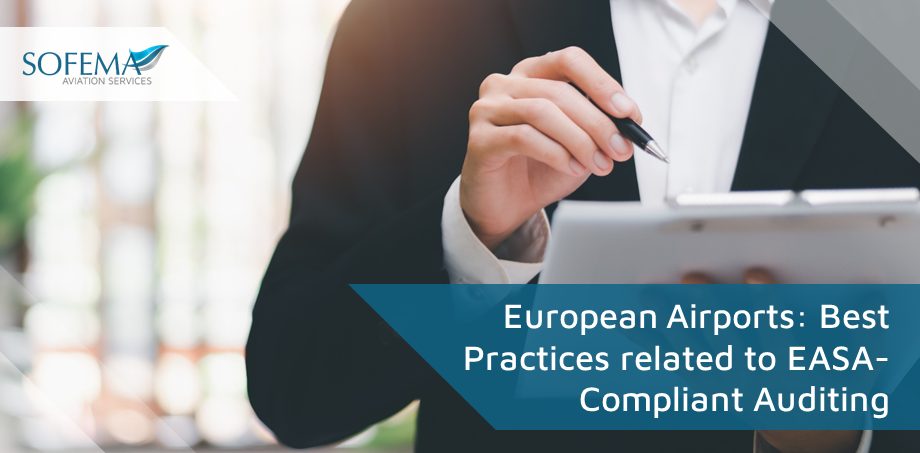Sofema Aviation Services (SAS) www.sassofia.com considers typical EASA-compliant auditing elements across multiple business areas and elements. The following issues and challenges are considered for each element.
- Related to the effectiveness of ensuring EASA compliance as per EASA and ICAO requirements, certified aerodromes shall demonstrate and continually monitor compliance with the requirements through audits and inspections.
Concerning the use of Contracted Activities in Aerodrome Operations
Contracted activities can bring efficiency and specialization to aerodrome operations, they also introduce an additional layer of complexity in ensuring compliance with EASA regulations.
- A robust auditing and oversight mechanism is essential to manage this complexity and ensure the safety and efficiency of aerodrome operations.
Always ensuring a Risk-Based Approach, means to means focusing more on areas that have a higher potential impact on safety or areas where previous non-compliances have been identified.
- Contracted activities can range from ground handling services, maintenance, security, catering, and fueling, to other specialized services.
- When an aerodrome operator contracts out any of these services, it remains responsible for ensuring that the contracted service providers comply with all relevant EASA regulations and standards.
Auditing of Contracted Activities: Best Practices
- Ensure Clear Contracts with Defined Roles and Responsibilities:
o Before any auditing can take place, there should be a clear contract that outlines the roles, responsibilities, and expectations of both the aerodrome operator and the contracted service provider.
o This contract should also specify the standards and regulations that the service provider must adhere to.
- Regular audits should be scheduled and conducted to ensure that contracted service providers are consistently meeting EASA standards.
o The frequency of these audits can be determined based on the criticality of the service, past performance, and other risk factors.
- Develop comprehensive checklists and guidelines for auditors to ensure that all aspects of the contracted service are reviewed. This ensures consistency in the auditing process.
- Auditors should be well-trained in EASA regulations, the specific requirements of the contracted service, and auditing techniques.
o They should also be familiar with the specific operations of the aerodrome.
- Following the audit, there should be a structured feedback mechanism where findings are discussed with the service provider.
o This allows for corrective actions to be identified and implemented.
Documentation & Corrective Action Plans
- Corrective Action Plans: If non-compliances are identified, the service provider should develop a corrective action plan, detailing how and when they will address the issues. The aerodrome operator should then monitor the implementation of this plan.
- All audit findings, feedback sessions, and corrective action plans should be thoroughly documented. This not only provides a record for future reference but also helps in identifying patterns or recurring issues.
Next Steps
Follow this link to our Library to find & Download related documents for Free.
Please check out the EASA Airports Aviation Compliance Management and Auditing – 4 Days training that is available at www.sassofia.com. For additional guidance, please email team@sassofia.com
Tags:
Auditing, aviation safety, EASA, EASA compliant, ICAO, Airports, EASA regulations, Airport Security, Airport Ground Handling, EASA compliance, SAS blogs, Aicraft Maintenance, Risk-based approach, EASA-Compliant Auditing, Aerodrome Operations, EASA standards




